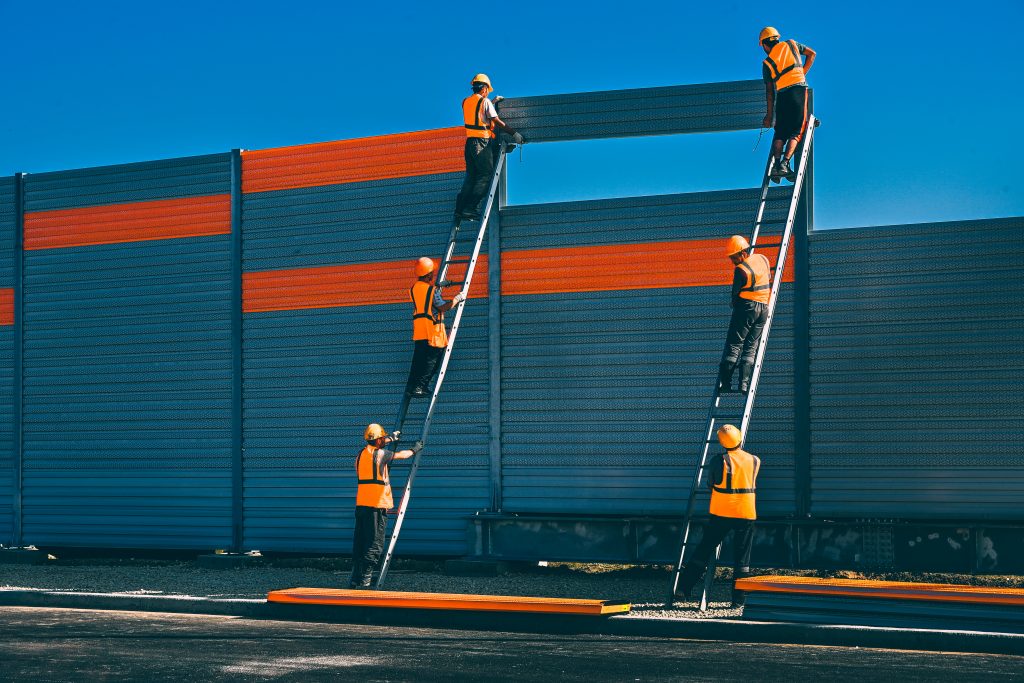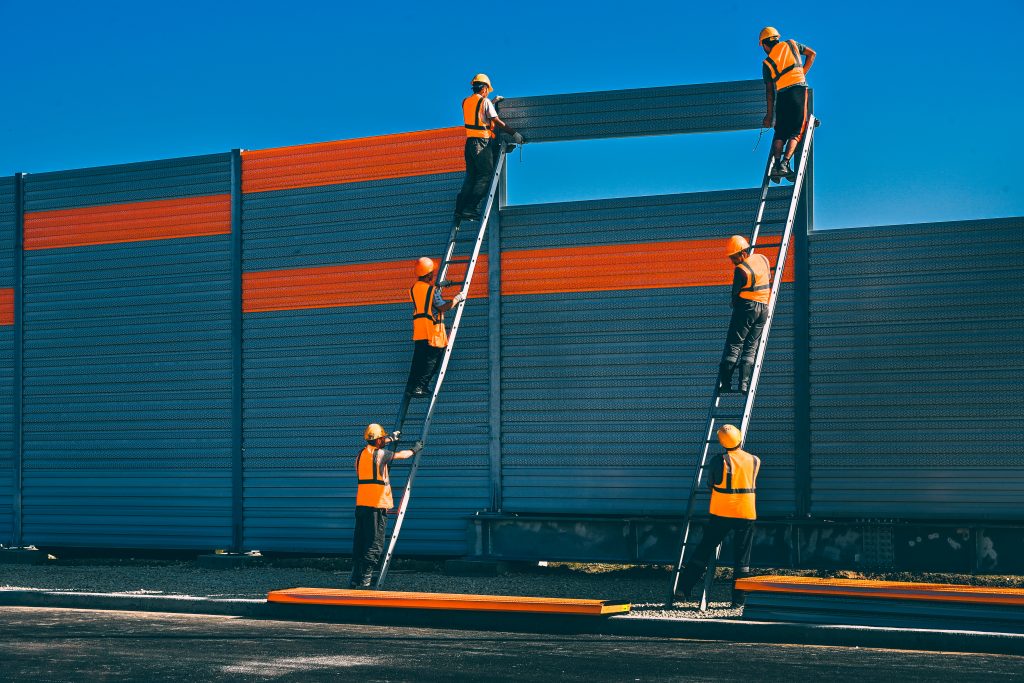Are you considering a construction project in your local area? It’s important to be aware of the local construction laws to ensure a smooth and successful project. Understanding these laws can help you navigate potential legal concerns and avoid unnecessary complications. In this article, we will address common legal concerns related to local construction laws and provide reassurance and guidance. From permits and zoning regulations to safety requirements and dispute resolution, we will cover crucial information that you need to know. So, whether you are a homeowner, contractor, or developer, this article will provide you with essential insights to help you navigate the complex world of local construction laws.

Understanding Local Construction Laws
Local construction laws are regulations and standards that govern construction projects within a specific jurisdiction. These laws are put in place to ensure the safety of construction workers, protect the environment, and maintain the integrity of structures. Understanding and complying with local construction laws is essential for anyone involved in the construction industry, including contractors, builders, architects, and property owners.
Why Local Construction Laws are Important
Local construction laws play a crucial role in ensuring the safety of construction projects. They outline specific requirements and standards that must be followed to prevent accidents, injuries, and fatalities. By adhering to these laws, construction professionals can create a safe working environment and minimize the risk of accidents. Additionally, local construction laws protect the interests of property owners by ensuring that structures are built according to approved plans and meet safety regulations.
The Role of Local Construction Laws in Ensuring Safety
The safety of construction projects is of utmost importance, and local construction laws are designed to promote and enforce safety standards. These laws outline specific guidelines for construction site safety, including requirements for personal protective equipment, fall protection systems, and fire safety measures. By following these laws, construction professionals can mitigate the risk of accidents and create a safe working environment for all involved.
How Local Construction Laws Differ from National Building Codes
While national building codes provide a broad set of standards for construction projects across the country, local construction laws are more specific to the needs and challenges of a particular jurisdiction. Local construction laws take into account factors such as climate, geography, and local infrastructure. They may include additional requirements that are necessary to meet the unique needs of the local community. It is important to note that local construction laws must meet or exceed the minimum standards set by national building codes.
Key Elements of Local Construction Laws
To gain a comprehensive understanding of local construction laws, it is important to familiarize yourself with the key elements that they encompass. These elements include permits and inspections, construction site safety requirements, zoning laws and land use regulations, environmental considerations, and contractor licensing and registration.
Permits and Inspections
Local construction laws typically require construction projects to obtain various permits and undergo inspections at different stages of the project. These permits and inspections ensure that the construction meets all safety and building code requirements. Examples of permits that may be required include building permits, electrical permits, plumbing permits, and mechanical permits. Inspections are carried out by local building authorities to verify compliance with applicable laws and regulations.
Construction Site Safety Requirements
Local construction laws outline specific safety requirements that must be followed at construction sites. These requirements may include the use of personal protective equipment (PPE), proper signage, adequate fencing, and the implementation of safety protocols. Construction professionals must be aware of and adhere to these safety requirements to minimize the risk of workplace accidents.
Zoning Laws and Land Use Regulations
Zoning laws and land use regulations dictate how land can be used and what types of structures can be built in specific areas. These laws help maintain the aesthetic appeal of a community and prevent incompatible land uses. Construction professionals must be aware of zoning laws and land use regulations to ensure that their projects comply with the allowed land use classifications and follow the prescribed building guidelines.
Environmental Considerations
Local construction laws also address environmental considerations to protect the natural resources and minimize the impact on the environment. These considerations may include regulations regarding stormwater management, erosion control, waste disposal, and protection of endangered species. Construction professionals must follow these environmental regulations to minimize the ecological footprint of their projects and ensure sustainability.
Contractor Licensing and Registration
Local construction laws often require contractors to obtain licenses or register with the relevant authorities. These licensing and registration processes ensure that contractors have the necessary skills, knowledge, and experience to carry out construction work in a safe and compliant manner. By hiring licensed and registered contractors, property owners can have confidence in the quality of the construction work being performed.
Navigating Local Construction Laws
Navigating the complexities of local construction laws can be a daunting task, but it is essential for anyone involved in the construction industry. Here are some key steps to help you navigate local construction laws effectively:
Researching Local Construction Laws
Start by conducting thorough research on the local construction laws applicable to your jurisdiction. This research can be done online, through official government websites, or by consulting legal resources specific to your area. Understanding the specific requirements and regulations will help ensure compliance throughout the construction process.
Identifying Applicable Codes and Regulations
Once you have familiarized yourself with the local construction laws, identify the specific codes and regulations that apply to your project. Different types of construction projects may have varying requirements, so it is important to know which codes and regulations are relevant to your specific project type.
Engaging with Local Building Authorities
Local building authorities are responsible for enforcing and interpreting local construction laws. Engaging with these authorities early in the construction process can provide valuable guidance and ensure that you are on the right track. Consult with building officials to understand their expectations and requirements for permitting, inspections, and compliance.
Seeking Legal Assistance for Compliance
If you find yourself unsure or overwhelmed by local construction laws, it may be beneficial to seek legal assistance. Construction law attorneys specialize in navigating the intricacies of construction laws and can provide guidance and support throughout the construction process. They can help ensure that your project is in full compliance with local laws, minimizing the risk of legal issues down the line.
Common Legal Concerns in Construction Projects
Construction projects can present various legal concerns that professionals must be aware of. By addressing these concerns proactively, you can mitigate the risk of legal disputes and ensure a smooth construction process. Here are some common legal concerns in construction projects:
Contract Disputes and Breach of Contract
Contract disputes can arise when one party fails to meet the obligations outlined in the construction contract. These disputes can lead to delays, cost overruns, and strained relationships between parties. It is crucial to have a well-drafted and comprehensive construction contract that clearly outlines the rights, responsibilities, and expectations of all parties involved. In the event of a contract dispute, seeking legal assistance can help resolve the issue and protect your interests.
Construction Defects and Liability
Construction defects can occur when the quality of workmanship or materials falls below acceptable standards, resulting in deficiencies in the completed structure. These defects can lead to safety hazards, performance issues, and financial losses. Construction professionals can be held liable for these defects, and legal action may be necessary to address the issue. Conducting regular inspections, using quality materials, and adhering to industry best practices can help minimize the risk of construction defects.
Worker’s Compensation and Labor Laws
Worker’s compensation and labor laws protect the rights and interests of construction workers. These laws outline requirements for fair wages, insurance coverage, and workplace safety. Construction professionals must comply with these laws to ensure the well-being of their workers and avoid legal penalties. Implementing proper safety measures, providing necessary training, and maintaining accurate records are essential for compliance with worker’s compensation and labor laws.
Permitting and Code Violations
Failure to obtain the required permits or comply with building codes can lead to costly violations and legal consequences. It is essential to understand the permit requirements and ensure that all necessary permits are obtained before commencing construction. Regular inspections should also be conducted to verify compliance and address any potential code violations promptly. Contractors and property owners are responsible for ensuring that all construction activities meet the applicable requirements.

Understanding Construction Liens
Construction liens are legal claims that give contractors, subcontractors, and suppliers the right to place a hold on a property if they have not been paid for their services or materials. Understanding construction liens is crucial for both construction professionals and property owners to protect their interests and come to fair resolutions in case of payment disputes.
What is a Construction Lien
A construction lien, also known as a mechanic’s lien or materialman’s lien, is a legal tool used by contractors, subcontractors, and suppliers to secure payment for their work or materials. When a construction professional is not paid what they are owed, they can file a lien, which places a claim against the property until the debt is satisfied. This gives them the right to foreclose on the property if necessary to obtain payment.
How Construction Liens are Used
Construction liens serve as a form of security for construction professionals. By filing a lien, they can protect their right to payment and potentially force the property owner to settle the debt. Construction liens can also motivate property owners to engage in negotiations to resolve payment disputes promptly. If a lien is not resolved, it can lead to a foreclosure action, where the property may be sold to satisfy the outstanding debt.
Enforcing and Resolving Construction Liens
Enforcing and resolving construction liens can be a complex legal process, and professional assistance is often necessary. Construction law attorneys can provide guidance on filing and enforcing liens, ensuring that the proper legal procedures are followed. By seeking legal assistance, you can navigate the intricacies of the lien process and work towards a fair resolution that protects your rights and interests.
Addressing Environmental Impact in Construction
Construction projects have the potential to have a significant impact on the environment. To minimize this impact and promote sustainable construction practices, local construction laws often address environmental considerations that must be taken into account throughout the construction process.
Environmental Considerations in Local Construction Laws
Local construction laws outline requirements and regulations related to environmental conservation and protection. These considerations may include guidelines for managing stormwater runoff, preventing erosion, conserving natural resources, and reducing pollution. Construction professionals must adhere to these environmental regulations to ensure that their projects have minimal negative impact on the environment.
Mitigating Environmental Impact
Construction professionals can take several steps to mitigate the environmental impact of their projects. This includes implementing erosion control measures, such as silt fences or sediment ponds, to prevent soil runoff into nearby water bodies. Proper waste management practices, such as recycling and disposal of construction debris, are also essential for minimizing environmental impact. Additionally, the use of sustainable materials and energy-efficient construction techniques can contribute to reducing the overall environmental footprint of a project.
Environmental Permits and Compliance
Many construction projects require permits specifically related to environmental impact. These permits ensure that construction activities meet specific environmental standards and regulations. Examples of environmental permits may include permits for wetland impacts, air emissions, or hazardous materials handling. Construction professionals must obtain these permits and comply with their requirements to ensure that their projects are environmentally responsible and legally compliant.
Implications of Local Construction Laws on Design
Local construction laws often dictate specific design requirements and guidelines that must be followed throughout the design process. These design regulations ensure that construction projects meet the aesthetic, functional, and safety standards set by the local community.
Design Regulations in Local Construction Laws
Local construction laws may include regulations regarding architectural design, building height restrictions, setbacks, and other design elements. These regulations help maintain the overall character and aesthetic appeal of a community. Construction professionals must be familiar with these design regulations and ensure that their designs comply with the specific requirements outlined in local construction laws.
Aesthetics and Architectural Guidelines
Local construction laws may address aesthetic considerations, such as architectural styles, building materials, and color palettes. These guidelines help create a cohesive and visually pleasing community. Construction professionals should carefully consider these aesthetic requirements when designing projects to ensure that they align with the local community’s vision and expectations.
Accessibility and Universal Design Standards
Local construction laws also often include accessibility requirements to ensure that buildings can be used by all individuals, regardless of their physical abilities. These requirements may include accessible entrances, ramps, handrails, and wider doorways to accommodate individuals with disabilities. Construction professionals must incorporate these accessibility standards into their designs to ensure compliance with local construction laws and promote inclusivity.
Safety Protocols and Best Practices in Construction
Ensuring the safety of construction workers is of utmost importance in the construction industry. Local construction laws provide guidelines and regulations for safety protocols and best practices that must be followed to minimize the risk of accidents and injuries.
Safety Training and Education
Local construction laws often require construction professionals to provide safety training and education to their workers. This may include training on the proper use of personal protective equipment (PPE), safe handling of equipment and materials, and emergency procedures. By investing in safety training and education, construction professionals can empower their workers to prioritize safety on the job site.
Personal Protective Equipment (PPE)
Local construction laws mandate the use of personal protective equipment (PPE) to protect workers from hazards and potential injuries. PPE may include hard hats, safety glasses, gloves, ear protection, and high-visibility vests. Construction professionals must provide the necessary PPE to workers and enforce its proper use to ensure a safe working environment.
Fall Protection and Scaffolding Standards
Falls from heights are a significant risk in the construction industry. Local construction laws outline specific fall protection standards and requirements for scaffolding to prevent falls and protect workers. These regulations may include guidelines for the installation and inspection of scaffolding, the use of guardrails, and the implementation of fall arrest systems. Construction professionals must adhere to these standards to minimize the risk of falls and ensure the safety of their workers.
Fire Safety and Emergency Preparedness
Fire safety is a critical concern in construction projects. Local construction laws often include regulations regarding fire prevention, fire extinguisher placement, and emergency evacuation plans. Construction professionals must have fire safety protocols in place, including regular fire drills, clearly marked evacuation routes, and readily accessible fire extinguishers. By prioritizing fire safety and emergency preparedness, construction professionals can protect both their workers and the surrounding community.

Legal Remedies for Construction Law Violations
In cases where construction law violations occur, there are legal remedies available to address the issues and seek appropriate resolutions. By understanding these legal remedies, construction professionals and property owners can protect their rights and navigate potential disputes effectively.
Filing Complaints and Reporting Violations
If you believe that a construction law violation has occurred, you have the right to file a complaint or report the violation to the appropriate authorities. Local building departments or construction regulatory agencies are responsible for investigating these complaints and taking appropriate action. By reporting violations, you contribute to upholding the integrity and safety of the construction industry.
Pursuing Legal Action and Damages
In more serious cases of construction law violations, pursuing legal action may be necessary to seek appropriate remedies. Construction law attorneys can guide you through the legal process, help gather evidence, and pursue claims for damages or other appropriate relief. It is important to consult with a construction law attorney to understand your rights and explore legal avenues for recourse, if necessary.
Consulting with a Construction Law Attorney
Navigating the complexities of local construction laws can be challenging, and that’s where a construction law attorney can provide invaluable assistance. Here are some reasons why consulting with a construction law attorney may be beneficial for your construction project:
When to Consult a Construction Law Attorney
Consulting a construction law attorney is advisable in various situations, including:
- When you need to draft or review construction contracts to ensure they protect your rights and interests.
- When facing legal disputes, such as contract disputes, construction defects, or breach of contract claims.
- When dealing with payment disputes or liens that require legal action to resolve.
- When seeking guidance on compliance with local construction laws and regulations.
- When filing complaints or pursuing legal action against construction law violations.
Benefits of Hiring a Construction Law Attorney
Hiring a construction law attorney offers several benefits, including:
- Expertise and knowledge: Construction law attorneys specialize in construction-related legal matters and have in-depth knowledge of the applicable laws and regulations.
- Legal advice and guidance: A construction law attorney can provide legal advice and guidance throughout the construction process, helping you navigate potential legal issues.
- Contract review and negotiation: A construction law attorney can review contracts, identify potential risks, and negotiate favorable terms on your behalf.
- Dispute resolution: If a dispute arises, a construction law attorney can help negotiate settlements, mediate conflicts, or pursue legal action when necessary.
- Protection of rights and interests: A construction law attorney can protect your rights and interests and ensure that you are fully compliant with all legal requirements.
Finding the Right Construction Law Attorney
To find the right construction law attorney for your needs, consider the following:
- Experience and expertise in construction law: Look for an attorney with a strong background in construction law and extensive experience handling construction-related legal matters.
- Reputation and track record: Research the attorney’s reputation and track record of successful outcomes in construction law cases.
- Communication and rapport: Choose an attorney who communicates effectively, understands your specific needs, and with whom you feel comfortable discussing your concerns and issues.
- Local knowledge: Consider hiring an attorney familiar with the local construction laws and regulations in your jurisdiction.
- Referrals and recommendations: Seek referrals or recommendations from trusted colleagues, friends, or industry professionals who have worked with construction law attorneys.
In conclusion, understanding local construction laws is crucial for anyone involved in the construction industry. These laws ensure the safety of construction projects, protect the environment, and maintain the integrity of structures. By familiarizing yourself with the key elements of local construction laws, navigating the legal landscape, addressing common legal concerns, and seeking professional legal assistance when needed, you can proactively protect your rights, interests, and the success of your construction projects.

























